Entertainment
The differences — and similarities — between the Coachella and Stagecoach festivals

After back-to-back weekends of the Coachella Valley Music and Arts Festival, with performances from a reunited No Doubt, Tyler, the Creator, Lana Del Rey and Doja Cat (complete with an entourage of sexy Yetis), sister event the Stagecoach Country Music Festival has rolled into Indio’s Empire Polo Club.
Stagecoach, which will feature performances by Eric Church, Miranda Lambert, Morgan Wallen, Willie Nelson, Post Malone, Dwight Yoakam and others, has grown in popularity since it started in 2007. This year it sold out well in advance of the fest.
So if you’re wondering how Southern California’s two largest music festivals, compare, here’s a primer.
The music
While the lineups are vastly different, there is one artist who is spending three consecutive weekends in Indio: Carin León. The regional Mexican music star attracted crowds at Coachella’s twin weekends. (León joins a small club of artists who have played both fests, including fellow Stagecoach 2024 performers Willie Nelson, Trampled by Turtles and Post Malone, but it’s even more rare to play both fests in the same year, as Nelson has.)
While Coachella is known for plenty of pulsing EDM beats, that has begun to transfer over to Stagecoach in recent years, with Diplo’s name now branding the indoor Honkytonk dance tent that started out as a place for traditional line dancing.
The grounds
The Stagecoach footprint is noticeably smaller than Coachella’s. The VIP rose garden is not part of the fest, nor is the hulking Sahara Tent, although it can be seen in the distance.
The Mane Stage is set up 90 degrees clockwise from where Coachella’s largest stage was, but at Stagecoach there are fewer stages overall. Stagecoach‘s largest music spaces are the Mane, Palomino (Coachella’s Mojave Tent) and Diplo’s Honkytonk (Coachella’s Yuma Tent). The air-conditioned Sonora Tent has been transformed into the Bud Light Backyard, with performances throughout the weekend, but it’s not a full slate of music like it was at Coachella. Some stars who are playing early on the Mane stage, including Josh Ross, Kylie Morgan and The War and Treaty, will perform a second set at the Bud Light Backyard during the weekend. The Stagecoach-exclusive Toyota Music Den features up-and-coming artists such as Shaylen and RVSHVD.
Coachella’s Gobi Tent has been turned into the Yellowstone Dutton Ranch with meet-and-greets with cast members of “Yellowstone” and “1923” and a merch collaboration between Yellowstone and Stagecoach.
Stagecoach also has VIP seated and standing sections, with the general admission fans being further out on the field for the Mane stage, and fans can bring in lawn chairs, which is a no-no for Coachella. The other stages are like Coachella with first-come, first-to-get-close-to-the-stage access.
Coachella’s craft-beer barn area has been renamed for the Mayor of Flavortown himself, Guy Fieri, and the food stalls from the last two weekends have been replaced with a large RV and area for Fieri and friends’ cooking demos all weekend long. Perhaps the best detail of the area: a smoker with Flavortown branding that has a metal sculpture of a bull’s head with red eyes.
Both festivals offer the standards of pizza and chicken tenders, but many of the L.A. restaurants that were at Coachella both weekends have decamped. While you can find some plant-based options, they aren’t as plentiful as at Coachella, while Stagecoach easily has the better barbecue game.
Outside of the main festival grounds, Stagecoach allows RV camping and you can only access the campgrounds if you are camping.
There’s also a space at Stagecoach for demonstrations with the Compton Cowboys.
Oh, and that lush green grass you saw on everyone’s Instagram during Coachella? It’s mostly gone now.
The art
While the rainbow Spectra tower is a permanent installation on the grounds at this point, most of the large installation art that created the landscape of Coachella is gone.
However, not far from Spectra is Mismo, an art installation of colorful paisley teardrop sculptures by Sofia Enriquez that was originally part of the program at Coachella 2019.
Stagecoach also has a couple of pieces of large country-themed art, including a horse sculpture and a cowboy boot.
The Ferris wheel is not quite art but definitely a landmark, and it remains in the same spot for both fests.
The stuff
Stagecoach is full of free stuff. If you have T-Mobile you can get a free lawn chair at their activation. The Bud Light Backyard let fans pick up a custom koozie with a choice of four designs. There are also free goodies at the Toyota Music den, including the favorite Stagecoach bandanna.
At Coachella, there were Neutrogena sunscreen kiosks where you could lather on some free sunblock.
The style
Cowboy hats, boots and fringe were favorite fashion choices at both fests in 2024, but the wild and colorful fashionistas of Coachella aren’t posing around the field at Stagecoach. There is, however, much more plaid, and gear covered in American flag prints.
Mullets are definitely back, with Peso Pluma’s Edgar style the most prominent at Coachella. At Stagecoach, you see some young people with mullets but you still occasionally spot someone who has been rocking the style since the early ’90s.
The one accessory that you will see at both? Bandannas, not just for fashion but a must to try to stave off the festival cough with the gusty winds blowing dust around the site. That’s a souvenir nobody wants to take back with them.

Movie Reviews
We Grown Now (2023) – Movie Review
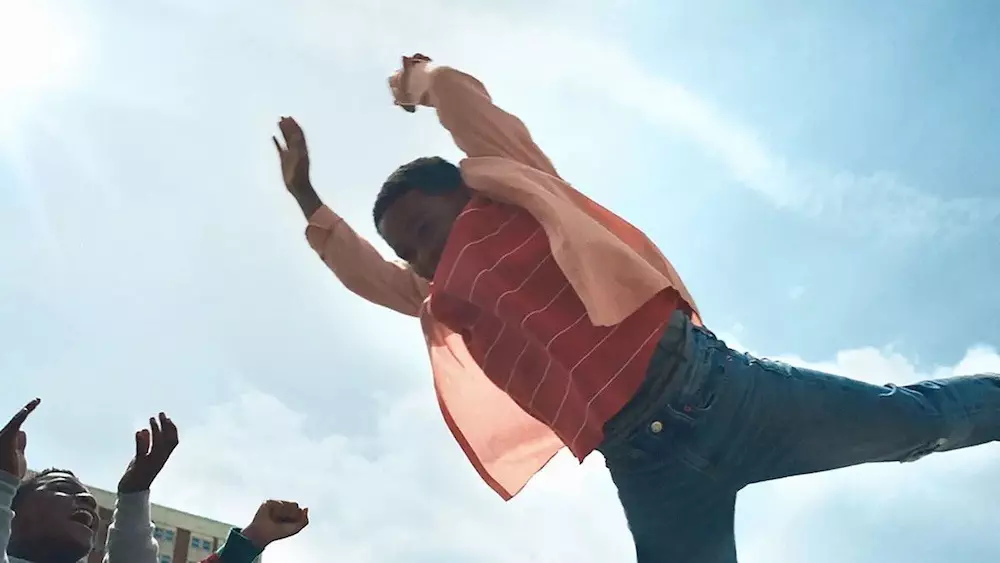
We Grown Now, 2023.
Written and Directed by Minhal Baig.
Starring Blake Cameron James, Gian Knight Ramirez, S. Epatha Merkerson, Lil Rel Howery, Jurnee Smollett, Ora Jones, Giovani Chambers, and Avery Holliday.
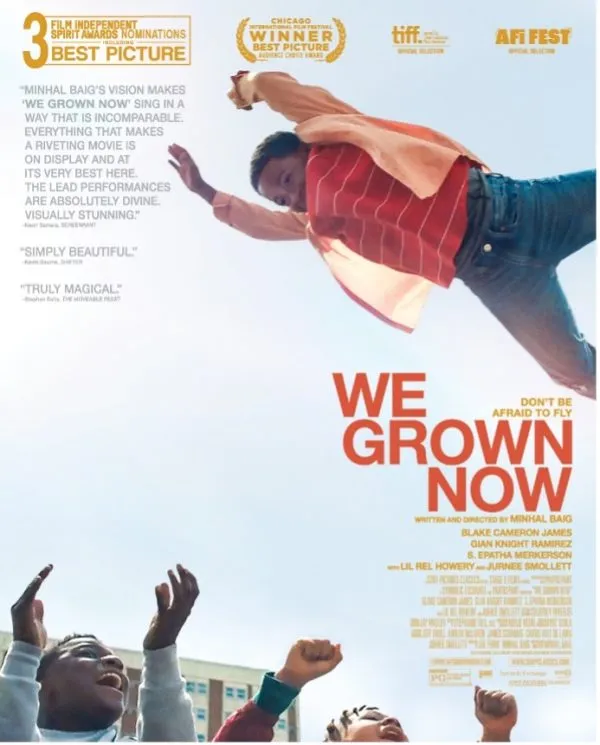
SYNOPSIS:
Two young boys, best friends Malik and Eric, discover the joys and hardships of growing up in the sprawling Cabrini-Green public housing complex in 1992 Chicago.
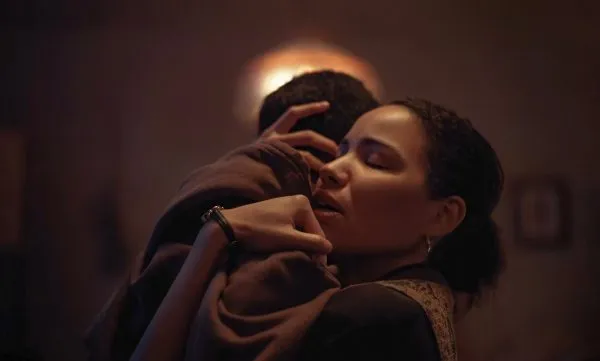
Writer/director Minhal Baig’s We Grown Now is a moving tale of a tested childhood friendship during the ups and downs of Cabrini-Green life. Minhal Baig has pulled together various stories of what it is like to grow up and live in the Chicago housing complex, setting the story here in 1992, mostly focused on Malik (Blake Cameron James), who believes that there are no rules here and that the only thing that matters is seeing how high you can jump.
This is, obviously, a film with sincere affection for a specific place in time, but also not one that lets periods spent allowing viewers to observe the housing complex hallways and homes (whether it be from the boys here dragging mattresses down multiple floors or stairs since the elevator is busted, or gentle camera movements taking us from one floor, above to the next) to get in the way of drawing these characters and telling an authentically engaging story about the trials and tribulations of raising a family in Cabrini Green, ensuring that the children are safe, and of course, the joys of living there as an innocent child assuming that just because one young boy has been shot and murdered, they will be safe.
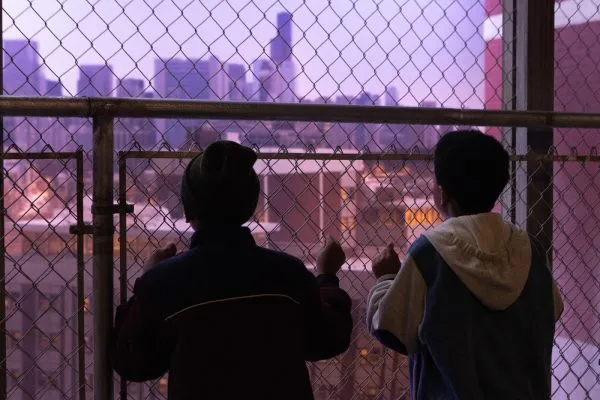
Malik and his best friend Eric (Gian Knight Ramirez) play outside, discuss what they want from the future, and also debate about Chicago-specific arguments, such as whether Michael Jordan needed Scottie Pippen or not to lead the Chicago Bulls to NBA championships. The film was wise enough not to overly romanticize life here, which was increasingly weighed down upon by oppressive local law enforcement insisting that due to the recent shootings, everyone (including the children) requires a keycard to enter their homes. Cinematographer Pat Scola is also fittingly instructed not to photograph these policemen’s faces during some scenes, keeping the vantage point from the low perspective of the children and often sticking with their reactions.
Meanwhile, Malik’s mother, Dolores (a winning performance from Jurnee Smollett), is a woman uncertain of how to continue making ends meet while putting up with the unfortunate failings of the housing complex. She is a family woman close to her mother (S. Epatha Merkerson) and isn’t so much still grieving the loss of her father but still paying tribute to him at dinner as a means to instill the importance of family onto Malik. On the same floor, Eric struggles with his education as his single father, Jason (a delightful dramatic turn from the reliably hysterical Lil Rel Howery), does his best to tutor the boy while managing the funds for his older daughter’s upcoming high school graduation.
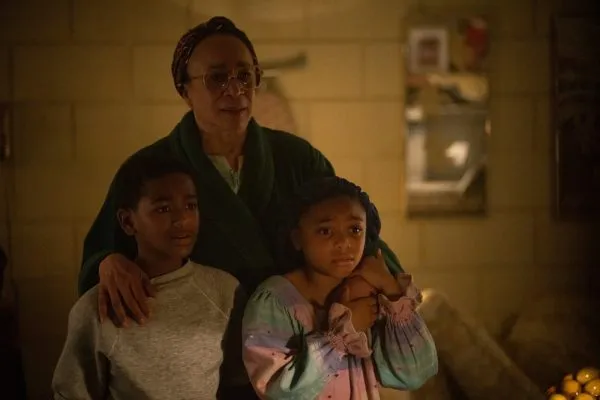
Once it becomes clear that one of these families is contemplating making a drastic change to their lives, a rift emerges in the friendship between Malik and Eric, which is believably heartbreaking but threatens to become overwritten in the film’s third act. Thankfully, the script pulls away from that and returns to the initial theme of jumping and what it means to soar. Similarly, We Grown Now is a sweet and charming tale of friendship set inside a specific setting, with that combination of romanticism and honesty allowing it to fly.
Flickering Myth Rating – Film: ★ ★ ★ / Movie: ★ ★ ★
Robert Kojder is a member of the Chicago Film Critics Association and the Critics Choice Association. He is also the Flickering Myth Reviews Editor. Check here for new reviews, follow my Twitter or Letterboxd, or email me at MetalGearSolid719@gmail.com
https://www.youtube.com/watch?v=embed/playlist
Entertainment
Opinion: For the greats of the jazz age, life on the road was perilous as well as glamorous
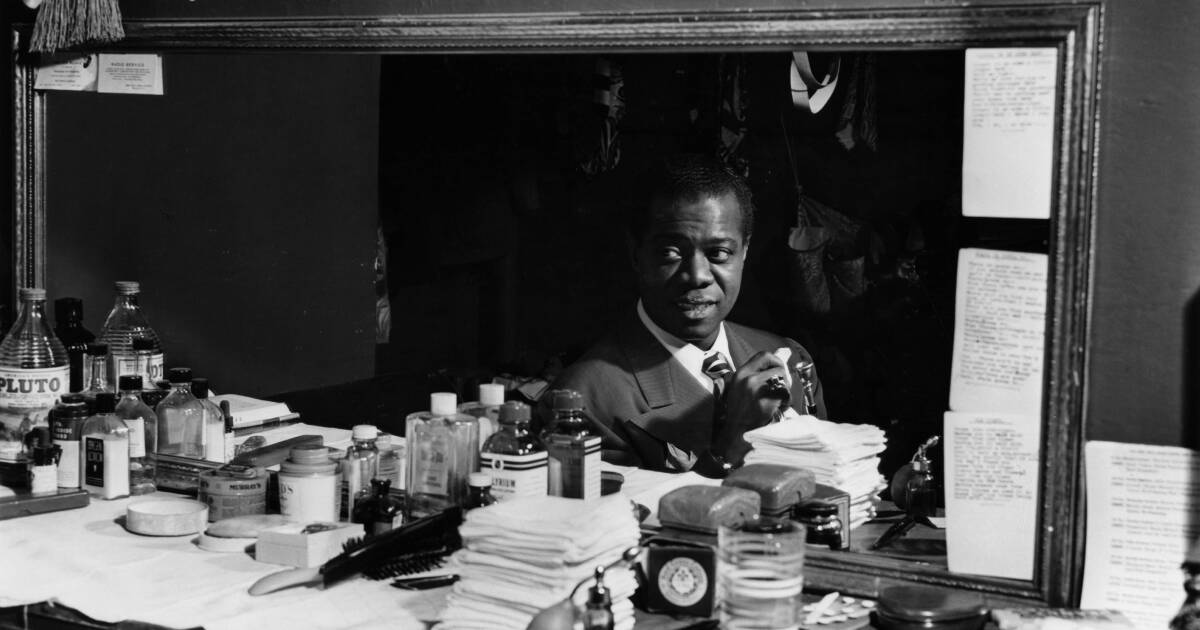
For traveling musicians, there are two versions of life on the road.
Jazz greats Duke Ellington, Count Basie and Louis Armstrong gave their own sentimentalized retelling of their nomadic existence from the 1930s onward, portraying the jaunts as being as amorous as they were glamorous, a veritable luxury cruise along bucolic byways jammed with adulatory fans and a femme fatale or two.
Much of that might have been true, but they were also living the other version of the wayfaring life. Those trips, often through hostile territory, were a harsh crucible, keeping Ellington, Basie and Armstrong away from home and family for lonely months at a time. They became professional wanderers, driving all day, performing into the early morning, learning to eat from greasy paper sacks. On bad nights for the bandleaders and their players, they caught a little sleep on the bus or in the car, scrunched between sweaty orchestra mates. On good ones, they found a lodging house and raced upstairs, hoping to claim a catnap before that evening’s gig. The more savvy veterans would leave the lights on to keep the cockroaches and bedbugs in their crevices. Layering newspapers atop the mattress was another trick; the crinkling sent the vermin scampering.
Peeling back those curtains can be enlightening because the three jazzmen from last century helped set the template for today’s migratory music makers, be they Taylor Swift or Beyoncé. Whatever the reality of their days and nights on the road, Ellington, Basie and Armstrong built the expectation that touring is all about luxe accommodations and fat paychecks. Looking into that tuneful past — on the occasion of Duke’s 125th birthday and the Count’s 120th, as we approach the centennial of Satchmo’s genre-defining Hot Five recordings — helps us not just separate myth from reality but also appreciate ways in which our world has gotten better.
The biggest change since their era? The hostile terrain that Jim Crow America created even for the nation’s most venerated Black travelers. Accidentally picking a whites-only hotel or eatery could land a band member in jail or worse.
Their journeys attuned these three orchestra leaders to the subtleties and unsubtleties of America’s color lines. No dining in Chicago’s Loop. No entry at night, and sometimes at all, into Goshen, Ind., La Crosse, Wis., and thousands of other “sundown towns.” And don’t mention the Civil War below the Mason-Dixon line, because down there it was still called the War of Northern Aggression. When Black musicians pulled up, sometimes gas station owners locked their restrooms. Other times the swimming pool at their motel was drained just as they arrived and refilled as they were leaving.
Ellington, Basie and Armstrong successfully navigated that perilous world, and these self-described gadabouts got to see this vast country in a way few Americans, and almost no Black Americans, did then. Hundreds of white fans who had never seen a Black person turned out in farming villages and mining towns — and boy, what an encounter it was on both ends. The farmers and miners got to hear the most intoxicating music on Earth from brassy cornet players and driving saxophonists, exotic trombone mutes, squealing trumpets and sultry clarinets. The musicians, meanwhile, were doing what they loved, being treated like celebrities in ways that shaped the mold for the likes of last year’s Eras and Renaissance tours.
One night in particular captured the joy Count Basie felt on the road, in circumstances that would have unsettled less determined performers. His band rolled into the lakefront burg of Manitowoc, Wis., the heart of Green Bay Packers country, on a night in 1972 when the Packers were facing off against the Detroit Lions. A TV set broadcast the gridiron action from one end of the venue while at the other end the band sat morosely, doubting they could compete for attention. Basie merely leaned forward and ordered, “Play.” For an hour he gave the football-mad audience his best and, little by little, fans headed across the large hall toward the music. Then they called friends to join them. Near the end of the evening the host borrowed the microphone to announce that the Packers had won. There was a polite cheer, then someone yelled, “How ’bout ‘April in Paris’ again?” Basie smiled, whispering, “Touchdown.”
Among African Americans, only the Pullman porters saw more of America, and even they just rolled through places like Fargo, N.D. But Ellington stayed on one winter night in 1940 for a concert at the Crystal Ballroom that drew about 700 fans who, for the price of $1.30, got to hear the orchestra hitting on all cylinders. The population of North Dakota was only 0.03% Black then, and so perhaps racism wasn’t as all-consuming as in other parts of the country. There was no TV to take people’s minds off the raging war, little money for the motion pictures, not much else to do in a city that celebrated its political and cultural isolation. That left jazz.
To Duke, the Count and Satchmo, music meant movement, and their freedom to roam was more liberating than a running back breaking into the clear.
Larry Tye is the author of “The Jazzmen: How Duke Ellington, Louis Armstrong and Count Basie Transformed America.”
Movie Reviews
La Chimera (2023) – Movie Review
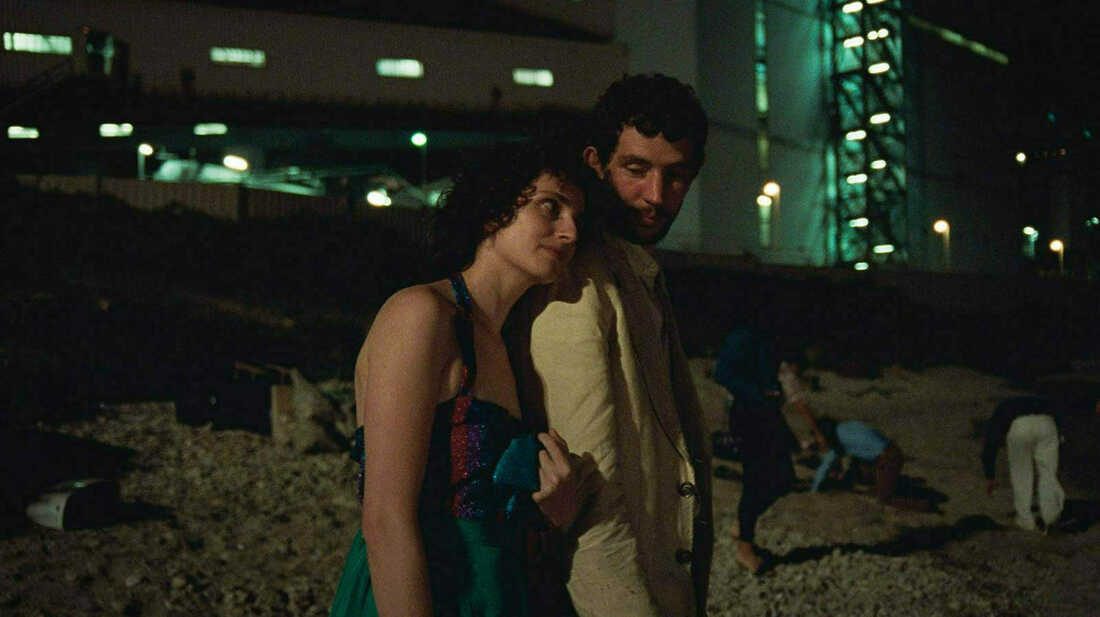
La Chimera, 2023.
Directed by Alice Rohrwacher.
Starring Josh O’Connor, Carol Duarte, Vincenzo Nemolato, and Isabella Rossellini.

SYNOPSIS:
Everyone has their own Chimera, something they try to achieve but never manage to find. For the band of tombaroli, thieves of ancient grave goods and archaeological wonders, the Chimera means redemption from work and the dream of easy wealth. For Arthur, the Chimera looks like the woman he lost, Beniamina. To find her, Arthur challenges the invisible, searches everywhere, goes inside the earth – in search of the door to the afterlife of which myths speak. In an adventurous journey between the living and the dead, between forests and cities, between celebrations and solitudes, the intertwined destinies of these characters unfold, all in search of the Chimera.

Italian Director Alice Rohrwacher has built an acclaimed career around films that mix reality and fantasy to perfection. Her latest film La Chimera continues this trend, depicting a lovelorn Englishman Arthur (Josh O’Connor) in 1980s Italy working with a gang to steal historical artefacts from local graves and selling them through a mystery bidder. While it may seem an odd premise, it is never less than captivating for its 2hr 10-minute runtime, balancing a world of ideas, mysterious, beguiling and distinct.
Italy here is a far cry from some of the more glamorous depictions of major Hollywood movies, this is an idyllic, rural community with a sense of poverty, perhaps at odds with the value of Arthur and Co’s finds. It is a clever juxtaposition between both the recent past and ancient history and playing with our sense of history and memory.

O’Connor gives a transformative performance speaking almost entirely in Italian and imbuing Arthur with a sense of internal turmoil that we slowly unpack, what is he running from and why does he seem so lost? We find out his love Beniamina is dead and Arthur is still processing her loss, after spending some time in prison. He gives off a cool air, chainsmoking with a white suit, which has been compared to Elliot Gould in Robert Altman’s The Long Goodbye. The supporting Italian cast ably supports O’Connor with Isabella Rossellini featuring in a small but vital role as Flora, whom Arthur resides with, a mentor figure for him.
What is perhaps La Chimera’s greatest achievement is balancing its contemplative emotional beats with a commentary on the nature of history and antiquities Rohrwacher perhaps acknowledges how many museum items are stolen. There is a spiritual feel to things that adds a fantastical layer as Arthur seeks a way to reconnect with his lost love, this also makes us question what we are seeing, is everything playing out how we think, is there something else at play? It’s these questions and layers that make this such a unique and mystifying film.

Never quite going where we might expect with hidden meaning lurking behind every corner, it is easy to fall under La Chimera’s spell. It feels like a film from years gone by in the best way possible, showing a side of Italy so rarely captured in mainstream film. It is at times both a critique of the world of archaeology and a deep, meaningful glance at how losses linger, the bizarre marriage of the two miraculously in sync.
Josh O’Connor, who is of course on a hot streak with Challengers, is magnificent giving off a cool exterior while anguishing on the inside, losing himself in this dangerous yet exhilarating world. This further cements Alice Rohrwacher as a filmmaker of the highest order a singular talent.
Flickering Myth Rating – Film: ★ ★ ★ ★ / Movie: ★ ★ ★ ★
Chris Connor
https://www.youtube.com/watch?v=embed/playlist
-
Movie Reviews1 week ago
Challengers Movie Review
-

 Politics1 week ago
Politics1 week agoHouse Republicans brace for spring legislative sprint with one less GOP vote
-

 World1 week ago
World1 week agoAt least four dead in US after dozens of tornadoes rip through Oklahoma
-

 Politics1 week ago
Politics1 week agoAnti-Trump DA's no-show at debate leaves challenger facing off against empty podium
-

 Politics1 week ago
Politics1 week agoStefanik hits special counsel Jack Smith with ethics complaint, accuses him of election meddling
-

 News1 week ago
News1 week agoAs student protesters get arrested, they risk being banned from campus too
-

 World1 week ago
World1 week agoNine on trial in Germany over alleged far-right coup plot
-

 News1 week ago
News1 week agoVideo: Police Arrest Columbia Protesters Occupying Hamilton Hall
















